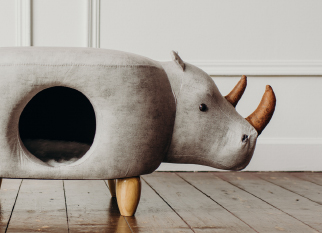Durability and maintenance of flannel fabric: in-depth analysis
1. Durability: quality that stands the test of time
Durability is an important indicator of fabric quality, and flannel excels in this regard. Its durable characteristics mainly come from the following aspects:
Fiber strength: Flannel is usually made of high-quality cotton or wool fibers, which themselves have strong tensile strength and wear resistance. During the spinning and weaving process, the flannel fabric is finely processed and woven, making it stronger and more durable overall.
Velvet structure: The fluff on the surface of flannel not only increases the warmth and comfort of the fabric, but also enhances the wear resistance of the fabric to a certain extent. The presence of fluff can disperse the direct impact of external forces on the fabric and reduce the wear on the surface of the fabric.
Dyeing process: High-quality flannel fabrics usually use advanced dyeing processes to ensure that the color is firm and not easy to fade. This not only improves the overall beauty of the fabric, but also extends the service life of the fabric.
Post-treatment process: During the production process, flannel fabrics will also undergo a series of post-treatment processes, such as pre-shrinkage treatment, shaping treatment, etc., to ensure that the fabric is not easy to deform and shrink during use.
It is the combined effect of these factors that enables flannel fabrics to maintain their original texture and appearance during long-term use, becoming a trusted choice for many consumers.
2. Convenience of maintenance: easy maintenance, long-lasting
Although flannel fabrics have excellent durability, correct maintenance methods are equally important. Only by mastering the correct maintenance techniques can flannel fabrics maintain their original texture and luster during long-term use.
Gentle washing: Washing is the first step in maintaining flannel fabrics. Since flannel fabrics have fluff on the surface, it is recommended to use a mild detergent and avoid using bleach or strong alkaline detergents. In order to maintain the softness and luster of the fluff, it is recommended to use cold water washing and avoid soaking for a long time.
Gentle treatment: During the washing process, avoid rubbing or pulling the fabric hard to avoid damaging the fluff or causing the fabric to deform. It is recommended to put Flannelette Fabric in a laundry bag before washing to reduce direct friction on the fabric.
Dry flat: After washing, the flannel fabric should be dried flat to avoid exposure to the sun or high temperature drying. Because high temperature may destroy the fiber structure in the fabric, causing the fabric to shrink or deform. Drying flat can also keep the fluff neat and shiny.
Avoid ironing: Although ironing can remove wrinkles on the fabric, for flannel fabric, ironing may damage the fluff or cause the fabric to discolor. It is recommended to avoid ironing flannel fabric, or choose low temperature ironing and pad the fabric with a cloth pad to protect the fabric.
Clean regularly: In addition to regular washing, the flannel fabric should also be kept clean. For dust and stains generated during daily use, you can use a soft dry cloth to gently wipe or use a vacuum cleaner to clean. Avoid using sharp objects or rough cloth to wipe the fabric to avoid damaging the fluff or scratching the surface of the fabric.
Storage precautions: When storing Flannelette Fabric, avoid placing it together with hard or sharp objects to avoid scratching the fabric. The storage environment should be kept dry and ventilated to prevent the fabric from getting damp or moldy. For flannel fabrics that are not used for a long time, it is recommended to fold them neatly and store them in a dustproof bag.



















